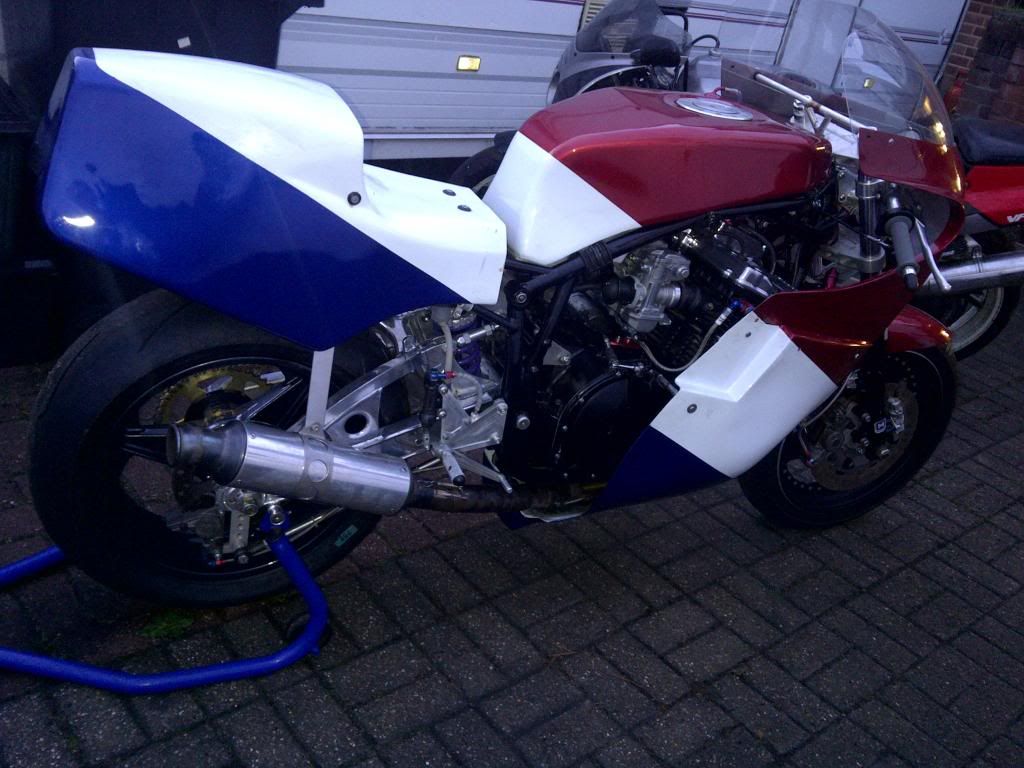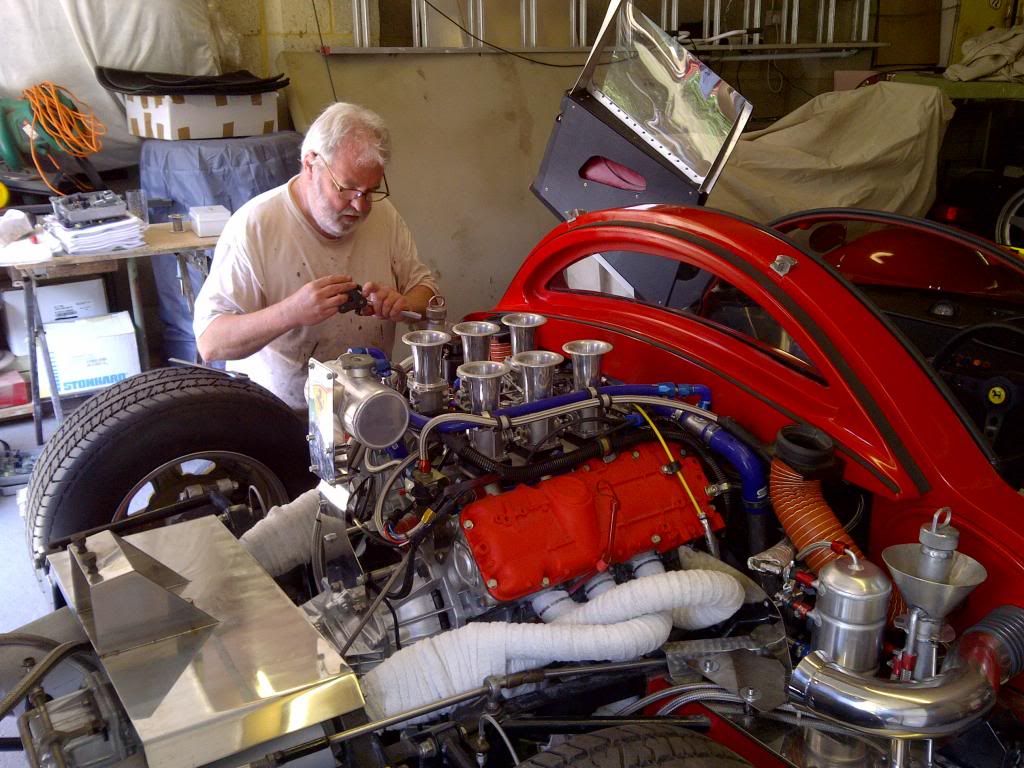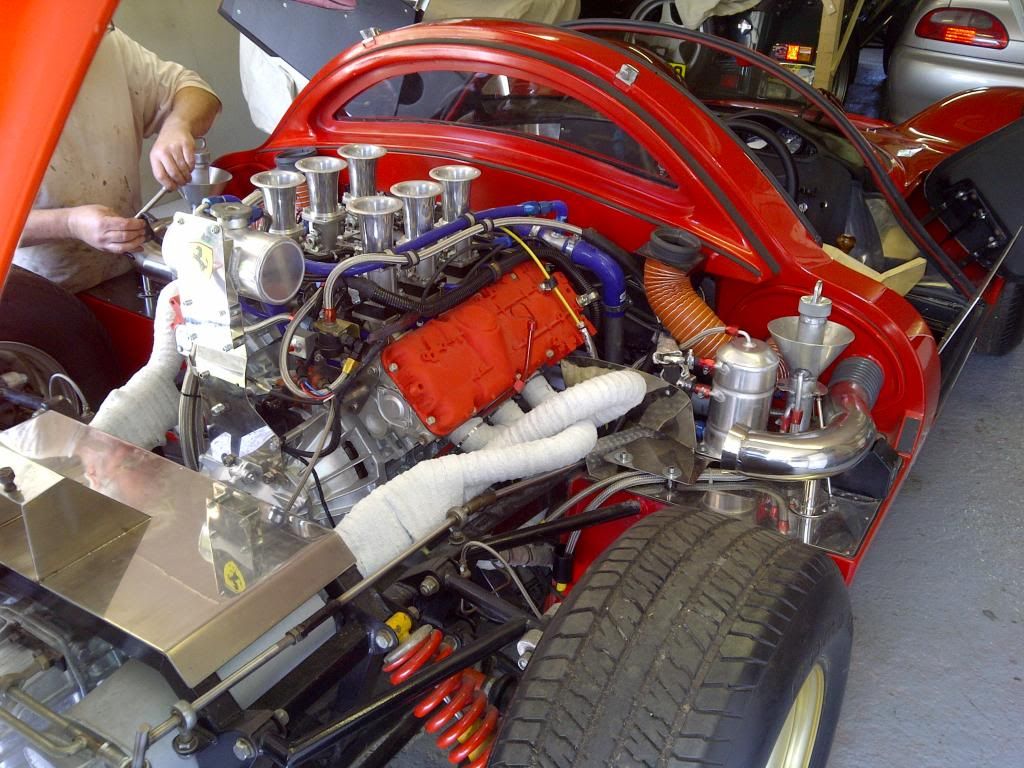.
Well there has been some progression in recent months, but it has been rather slow. I had been concentrating on sorting some Renix / Fenix ecu issues, and getting F50 finished:
http://www.renaultalpineownersclub.com/ ... 9&start=15
I’ll post an update with some of the gory details, haven’t had the chance yet… will do soon.
On my PRV development front, although linked, progress has been somewhat slower than I had hoped. I have been quietly working on further developing my cam profiles, and some other interesting things, but there are a few related topics, so here goes:
The valve rocker gear of the PRV also charts an interesting development history, and there are lessons and information we can draw from the PSA engineers incremental development of the 2V per chamber theme utilised in their other designs as they share lineage to the PRV; notably the Peugeot 2V heads (chamber and ports), R21 turbo head, cooking Cleo motors, Peugeot 106, 205 GTI 1600, AX GTI, even the Fuego 2.2ltr head, and the R21 8V and 12V are in fact all related with individual tweaks, except only the 8V rocker geometry is the same as the PRV. It is interesting to see how they developed the R21 12V 4 cylinder head from the 8V; casting modifications were only done where necessary, and this further points to the fact that all changes were very deliberately followed down a development route that met a particular engineering need. Cost of change is extremely high in series production, and unless tangible performance improvement in either economy or power resulted, then these modifications would have never been implemented.
Given that the later 4 cylinder engines with the same basic head and chamber arrangement were still being developed and in series manufacture after the PRV was terminated (development dollars still being spent on them), then this gives us further clues as to where we need to be looking to develop our own humble PRV power unit further. Hence, the clues are in the study and analysis of the later engines. I will drop in additional topics as we go, and more to come as john Wheeler has kindly offered that I may use some of his R21 12V pictures as illustration – many thanks John.
So starting with the rocker arms, you can see below how the design was initially introduced in the R30, weight (driving valve bounce, spring load and harmonic issues etc limiting a higher safe rev limit) and material compatibility issues (wear rate of camshafts) etc, led to some considerable re-design effort. The resultant alloy rocker with fused follower pads is quite a significant engineering change and high tech at the time. As you all know both types can be found in the PRV, and the later alloy ones being the ones to use, as mentioned before. The last one on the right is the hydraulic adjuster version, and is found in the last generation of the PRV 3ltr even-fire atmo engines – Laguna, Espace, Citroen XM etc. These certainly cured much of the PRV characteristic clatter (and reduced maintenance need)… so more of refinement for a more discerning public taste than performance per se in this case. It’s heavy and no use to us really. There is a nice article in No. 94 of the Mille miles magazine page 43 on rockers, weights and lightening them. I must say, I haven’t chased after lightening them especially, certainly not after the lower picture.. yes it can happen in a high rev race motor.

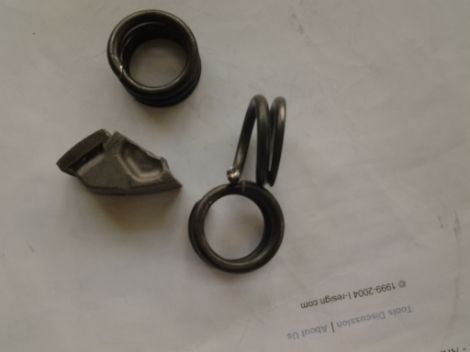
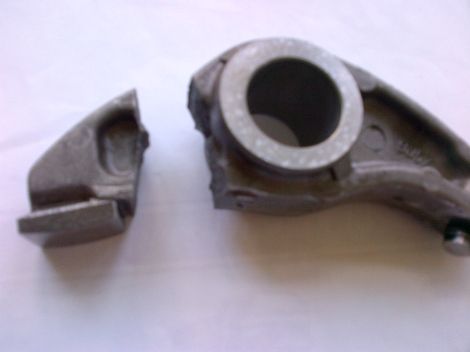
The valve spring failed, and this was in F50, there was some surface corrosion on the inside surface of the coils I hadn’t spotted when installing, this had caused minute surface pit corrosion. This provided the initiation site for a fatigue crack to propagate across the spring core, and eventually fail. You can see the progression of the crack from the surface to the core of the spring under microscope. Quite interesting, but the mess caused was certainly less so, as the spring collapsed, coil bound, snapped the rocker, and the exhaust valve dropped into the chamber… Hence, be very careful when using used springs. You don’t want to see any imperfections, and especially any marks or features breaking through the original shot-peen surface. You have been warned! Unfortunately new springs are NLA from Renault and Simon Auto, I have already tried, and Richard kindly managed to get me the last new OE set from Renault. I have engineered and run other spring arrangements, but for the majority of folk this is too involved and expensive for their application. So if you have any old springs take care of them!
The rocker arm ratio was also increased with the series development, from 1.4, 1.5 to 1.6 in the roller rocker about to follow (far right), and then 2.0:1 in the12V (unfortunately we can’t use them in our heads, and you will see why later). One of the benefits of the higher ratio, is it will yield greater performance when setup with the right cam design; allowing more area under the valve lift time-area integral, hence increased volumetric capability, faster valve opening, and greater lift given the physical constraints that the lobes need to fit and the follower pad size etc.
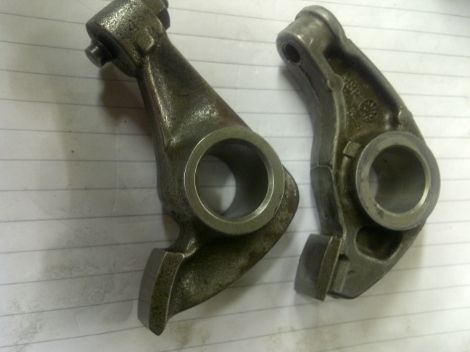

I have spoken about the benefits of going to the roller rocker on here, and some of the threads I gave the links to the discussions I have been involved on the DMC forum etc. I will find the page number later if you want to look back and wander over to the other forums. However, it really is the key to opening up higher lift, higher valve acceleration, and hence more aggressive profiles that will narrow the gap to 4V per cylinder technology with the humble PRV. Anyway, I found the rockers quite by accident as I was walking into a scrap yard many years ago and spotted something, not knowing what the head on the side of the bench was, where it had come (nor did the merchant, it had been sat there a long time was all he could note), but I recognised the geometry and general arrangement of the rockers and bought the complete head at risk. I wasn’t able to identify the rockers for some time, but the geometry was indeed correct, and was in fact derived from the PSA stable. I then set about designing a suitable camshaft to work with the roller, taking over a year on and off as the profile is completely different to yield the required lift curve when compared to the OE PRV profiles and geometry. This took some development and repeat grinds were undertaken slowly in conjunction with the cam grinder, until I had something that worked in principle. I could then tweak from there to get the basic timing, LCA, lobe area etc that I needed to design a new series of roller profiles for the PRV. I’m just about to cut a final cam from billet, as the roller pressure angle and reduced contact area excludes the use of chilled cast blanks, and hence the price is a premium, but then this is where the real horse power is going to be released for the 2V.
Here’s an article you can read from Renault on its development, focused on the friction reduction properties, and hence reduced part throttle losses. I’m more focused on the performance benefits, but the reduced friction is really significant – see the valve train paragraph.
http://www.renault.com/en/Lists/Archive ... iction.pdf
Here’s the roller rocker jigged up on bench timing check and tests, with a chilled cast cam as a development piece. I’ve got some changes around the desired base circle diameter, but this can be sorted in the first billet cnc cut.
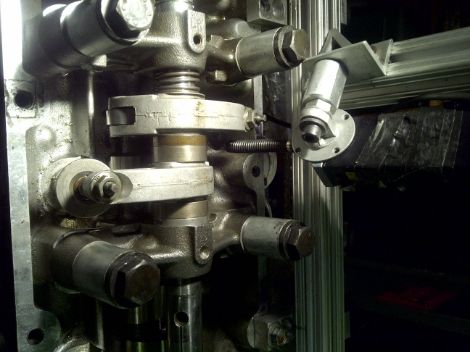
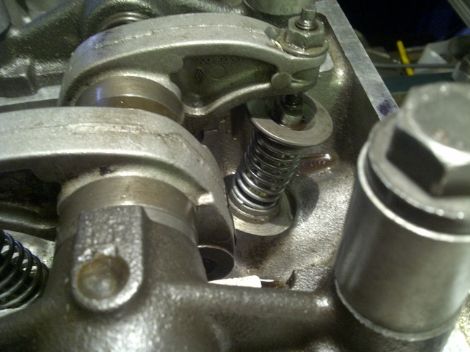
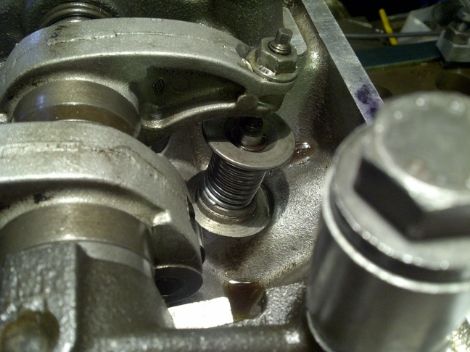
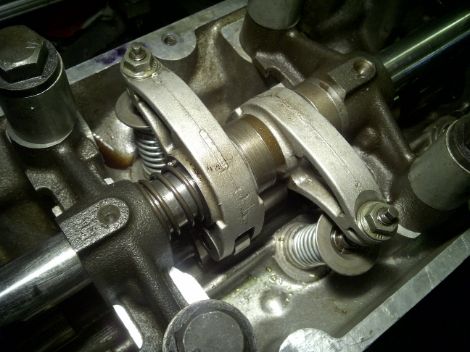
More to follow on this, plus other developments in the later 2V chambers from PSA, R21 8 and 12V arrangements etc on this topic.
As an aside some interesting links:
http://www.autoblog.com/2009/08/19/ebay ... pe-engine/
I think I put this one up before:
http://www.a310alpine.com/PRV%20V6%20Resto.htm
we saw the lambda go to 14,7:1 and keeping it. good thing is that from the LC1 i can change this value, making different curve output of his 0-1volt, keeping the true wideband signal as reference.













